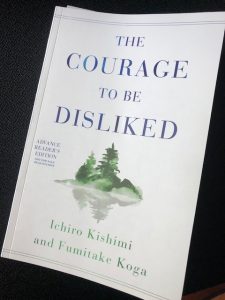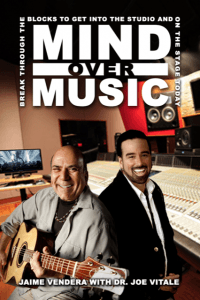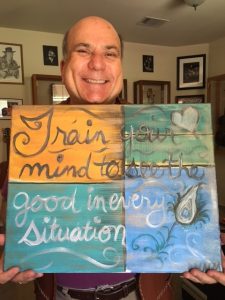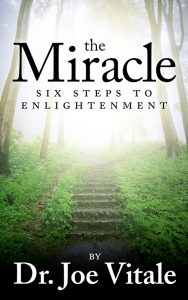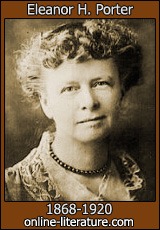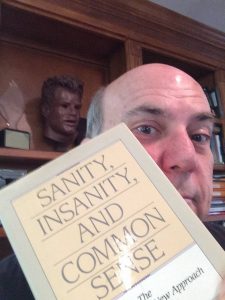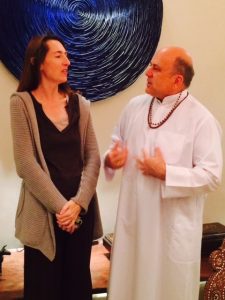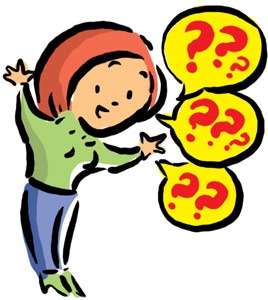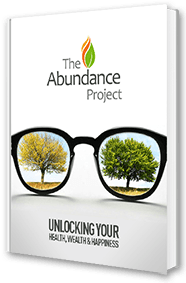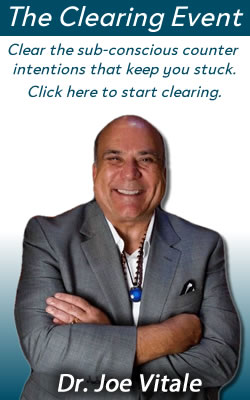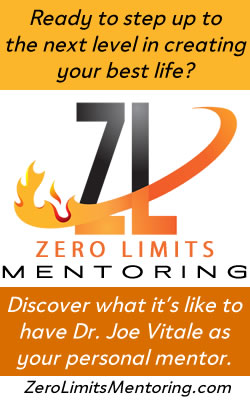Tag: happiness
The Courage To Be Disliked
Last month I was lucky enough to be given an advanced prepublication review copy of The Courage to Be Disliked by Ichiro Kishimi and Fumitake Koga (Atria Books, May 2018 release).
I say “lucky” because the book changed my life.
I had never heard of it before. But the book is a runaway bestseller in Japan. It sold 3.5 million copies in Asia.
- A million copies sold of any book is miraculous.
- Over three million copies sold in Japan alone is staggering.
The book is a dialogue between a student and a philosopher.
The messages are potent.
Most of the material stems from the work of psychologist Alfred Adler. As much as I’ve read in psychology, I wasn’t familiar with Adler.
I am now.
Adler (1870-1937) was an Austrain physician, psychotherapist, and the founder of Adlerian psychology, sometimes called Individual Psychology.
Around 1907 Adler and Freud, along with Rudolf Reitler and Wilhelm Stekel, began meeting weekly in a type of early mastermind. Their “Wednesday Night Meetings” eventually grew into the birth of the psychoanalytic movement.
Freud and Adler did not agree and went separate ways. I’m currently collecting and reading Adler’s works, such as Understanding Human Nature (1927) and The Science of Living (1929).
While I am digging into the original words of Adler, I find The Courage To Be Disliked an easier approach to understanding him.
Here’s why…
The Courage to Be Disliked is a refreshing stir for self courage.
Rather than giving away your power to circumstances, you use your power for choice.
The book explains etiology, which is the idea of cause and effect, versus teleology, which is the idea of meaning and choice.
“We are not determined by our experiences, but are self-determined by the meaning we give to them…” – Alfred Adler
In other words, many schools of thought (including Freud’s) say you are the product of your past and/or your environment.
That is cause and effect thinking, or etiology.
But Adler’s approach is to say you can create your life from new meaning and choice, which is teleology.
Obviously, the latter is more empowering and freeing.
The latter doesn’t need anything outside of you to change for you to change.
You can change with a decision.
The Adler way is not one of victimhood but of empowerment.
For example, rather than saying you are the way you are due to the circumstances of your childhood, or current circumstances, you instead choose to create how you want to be from goals selected out of this moment.
- The past has no hold over you.
- Environment has no hold over you.
- Others have no hold over you.
At first glance, the concepts in The Courage to Be Disliked could seem daunting and unrealistic.
But as I kept reading the book, and following the concepts being explained, I realized that this book is a manual for awakening.
There are too many concepts to repeat here, but one crucial one is this:
“All problems are interpersonal relationship problems.”
Let that sink in.
“All problems are interpersonal relationship problems.”
The idea (simplified) is that you may sometimes try to please others, which is giving away your power to others.
You can’t easily be happy if you are waiting on another’s approval.
When you choose yourself, you are free.
You may be disliked; but you are free.
But here’s an even deeper insight…
An advanced insight is this: you have an interpersonal problem with someone in order to justify something you don’t want to do.
In short, you created the need for an excuse and then created the interpersonal problem to rationalize the excuse.
The problem or person didn’t come first; your need for a way out did.
This is similar to my own observation:
“The meaning you give an event is the belief that attracted it.”
You don’t realize it, but it’s actually you and your meaning/beliefs creating your life.
This completely transforms the idea of problems with other people.
You created them!
The Courage To Be Disliked explains all of this, and more, in an easy to read style.
It’s simply a conversation.
But “the student” is asking what you would probably ask.
And “the philosopher” is responding as might Socrates, or Adler himself.
Along the way you get “aha” moments of insights.
For example, learning to separate tasks is important.
That means learning to understand what is under your task to do, and what is for others to do.
- Wanting someone to like you isn’t your task. It’s theirs.
- Wanting a child to clean his or her room isn’t your task. It’s the child’s.
- Wanting to be recognized for success isn’t your task. It’s the public’s.
Knowing this “task separation” gives you freedom.
“We cannot think, feel, will, or act without the perception of some goal.” – Alfred Adler
I’ve often referred to people trying to give me their task as them trying to give me their monkey.
They don’t want to care for “the monkey” so they try to pass it off to me.
But I have enough monkeys.
Knowing that I don’t want another monkey, and that their task isn’t mine to do, makes it easier for me to have a boundary and maintain it for my own self-care.
As a result, I can be free.
Here’s a recent example:
Jaime Vendera is a vocal coach. A terrific one. He’s written Raise Your Voice and The Ultimate Breathing Workout. He’s helped lots of singers, including me.
He wrote to me one day saying he had an idea for a book I could write. He suggested it could be about mindset for musicians.
While I liked the idea, I sensed he was passing a monkey to me.
So I wrote back, saying it was his idea, or his task, so he should write it.
To my surprise, and his credit, he took the challenge.
He completely wrote the book, showed it to me, and I added some content, and a subtitle to it.
We are now coauthors of the book, Mind Over Music: Break Through the Blocks to Get Into the Studio and Onto the Stage. (It’ll be out next month.)
Instead of my taking on his task, I simply kept my boundary and supported him.
The result was a win-win for both of us.
Do you see how this works?
The Courage to Be Disliked contains far more wisdom, theory, and technique than I could possibly relay in this article.
But I don’t want you to settle for this post.
I want you to read the book.
Whether you do or not, of course, is your task, not mine.
Ao Akua,
PS – The Courage To Be Disliked will be in stores May 8, 2018. You can order it in print, for your Kindle reader, or on audio right now at Amazon: https://smile.amazon.com/Courage-Be-Disliked-Phenomenon-Happiness/dp/1501197274/
The LOA Glad Game
One of the best Law of Attraction books you could read today was first published in 1913.
Let me tell you about it…
Recently we watched the PBS television remake of the classic children’s book, Pollyanna.
I absolutely loved the new movie.
The acting, scenery, editing and story were virtually perfect.
There have been other movies of Pollyanna, going way back to 1920 with famous silent film star Mary Pickford. And of course Disney did their version in 1960 with Hayley Mills.
But this recent version is fresh and timely.
And I loved being reminded of the message in it.
At the core of Pollyanna’s sunny personality is “the glad game.”
In short, it’s the ability to find something to be glad about in any situation.
“There is something about everything that you can be glad about, if you keep hunting long enough to find it.” ― Eleanor H. Porter, Pollyanna
As Porter’s books reveal, this is at first something you have to train yourself to do. Even Pollyanna wasn’t born knowing it. Her father taught it to her.
It reminds me of the art I bought a few months ago:
In short, you can train your mind to see the good.
It’s what recent neuroscience is telling us.
You are not your brain; you are the operator of it.
You can teach your mind how to look for the “glad” in life.
And once you “get it,” looking for the glad in any situation becomes a fun challenge.
But the payoff is happiness.
And isn’t that what you want?
On my forthcoming new album, I plan to record a song called “Look for the Light.” It’s a reminder that there is light in everything.
But after seeing this remake of Pollyanna, I also wrote a song called “The Glad Game.”

I’m dedicating my forthcoming sixth singer-songwriter album to Melissa Etheridge. It’ll have a “glad” song on it.
I’m using what I learned from my private lesson with rock icon Melissa Etheridge to write something memorable.
And all of this got me wondering where the glad game came from.
Did Eleanor Porter invent it?
“What men and women need is encouragement. Their natural resisting powers should be strengthened, not weakened…. Instead of always harping on a man’s faults, tell him of his virtues. Try to pull him out of his rut of bad habits. Hold up to him his better self, his REAL self that can dare and do and win out! … The influence of a beautiful, helpful, hopeful character is contagious, and may revolutionize a whole town…. People radiate what is in their minds and in their hearts. If a man feels kindly and obliging, his neighbors will feel that way, too, before long. But if he scolds and scowls and criticizes—his neighbors will return scowl for scowl, and add interest! … When you look for the bad, expecting it, you will get it. When you know you will find the good—you will get that…” – Eleanor H. Porter, Pollyanna
In my new book, The Miracle: Six Steps to Enlightenment, I mention a little book called Just Be Glad.
I went looking for it and found it.
It’s by Christian D. Larson, a popular New Thought author of such books as Your Forces and How to Use Them. He also penned the famous Optimist Creed, which I’ve reprinted in a book or two of my own.
Larson’s glad book came out in 1912.
Porter’s glad novel came out in 1913.
I can’t find any references to any “glad game” before 1913, when Pollyanna: The Glad Book was first published.
Certainly after the book became a bestseller, it triggered more books, a board game, a play, movies, and rumors have it there were glad game mastermind meetings.
Pollyanna became a huge bestseller in 1914, became a publishing phenomena, ignited a joyous, glad-hunting following around the world, and is still regarded as a classic of children’s literature today.
Maybe Larson’s little book gave Porter the idea for her novel. I can’t say. It’s not likely, though.
Porter was probably finishing her novel and sending it to the publisher in 1912, when Larson’s book arrived.
So I think Porter deserves full credit for creating the idea of The Glad Game.
But I was also curious why the glad game isn’t talked about much these days.
Considering how much stress is reported in the world, and how much “fake news” is triggering unsettling emotions in people, learning to play the glad game would be welcome relief.
It could even be healing.
It could even help us return to a clarity of mind where we could better see our choices.
In fact, the glad game could be a wonderful way to change your inner vibration to one that is higher, brighter, and even wiser.
As you know, you get what you radiate.
Change the dial inside, using the glad game, and you can attract happier results.
So, why don’t more of us play the game?
My guess is that critical, skeptical, wounded, or cautious people think being a “Pollyanna” is not being a realist.
Over the decades, the term “Pollyanna” has come to be an insult; used to tell someone they are foolish, not in touch with reality, and possibly even dangerous to themselves.
But being a Pollyanna is making a choice on how to see the world.
You can still see the challenges, and still see the good in them, and still act to change them.
Letting situations or other people steal your happiness is being a victim.
Choosing to see the good/glad in situations or other people is being empowered.
You have a choice, of course.
For me, life is an optical illusion.
You see what you unconsciously expect and believe.
Like Pollyanna, you can consciously choose to look for and find the good/the glad/the light.
It’s your choice.
“Be glad. Be good. Be brave.” – Eleanor H. Porter
Remember, if you see the good but just sit there, you aren’t co-creating your reality.
You want to see the good, see the actions you need to take next, and do them.
After all, when Pollyanna was injured by a car, she didn’t give up. (She did briefly, but she pulled out of it.)
Instead, she got treatment and she got better.
Eleanor Porter, the author of Pollyanna: The Glad Book, explained it this way:
“Pollyanna did not pretend that everything was sugar-coated goodness, instead Pollyanna was positively determined to find the good in every situation.”
Note the difference?
Just looking at the world with blind eyes to objective reality is not what the author meant; it was looking at the world and finding the good in it.
Eleanor Porter once told an interviewer –
“People have thought that Pollyanna chirped that she was ‘glad’ at everything … I have never believed that we ought to deny discomfort and pain and evil; I have merely thought that it is far better to ‘greet the unknown with a cheer.'”
I believe the 1913 book was an unrecognized Law of Attraction resource.
Maybe it’s time for all of us to read it again, or at least go see the movie.
I think you’ll find something glad in it.
Ao Akua,
Joe
PS – Learn about the recent PBS TV version of Pollyanna here:
https://www.amazon.com/Pollyanna-Sarah-Harding/dp/B01N67733P/
Your Reality vs Mine
Being a student of psychology for decades, I’m still reading anything I can find, old or new, to help me better understand myself and others.
Most recently I devoured Sanity, Insanity, and Common Sense, a 1987 book by Rick Suarez, Roger Mills, and Darlene Stewart.
The book describes a “Psychology of Mind” that I love.
Today you can easily find books echoing the principles in Sanity, Insanity, and Common Sense but I love the original for more or less introducing the ideas to the mental health community back in the 1980s.
In short, the four key points in the book (in my own words) are these:
1. Thought shapes reality.
2. Each person lives in a separate reality.
3. There are levels of consciousness.
4. Feelings and emotions reveal the level of consciousness.
By themselves, standing stark naked on the page, they may not seem like much.
You may have even heard of them before.
But let’s go deeper:
1. Thought shapes reality.
You know this one. You’ve heard it from me and other authors. But to bring it alive, you have to realize that your thoughts are creating your reality right now. No matter what your explanation is for your life, it is being created mostly by thought. Yes, you have behaviors and actions, but they are first triggered by thoughts. Thought comes first. Thought shapes reality. Thought is where you change reality.
2. Each person lives in a separate reality.
This was a major a-ha insight for me. The authors prove that each person lives in a perceived reality created by their unique set of thoughts. Their perception creates their version of reality. You do it. I do it. We all do it. But virtually no one is aware that they do it. Understanding that the people you deal with aren’t thinking like you, and they in fact view the world differently than you do, explains the challenge we have in communicating with and understanding each other. You are from one planet; I am from another. Now, let’s talk. See the problem?
3. There are levels of consciousness.
More recent authors, such as the late David Hawkins, have explained that there are levels of awareness or consciousness. Lower levels are where you’ll find revenge, greed, depression. Higher levels are where you experience love, compassion, understanding. Just knowing there are levels can help you understand your life in any moment. If you are feeling down, you need to think-do-be something up the ladder of consciousness. It may be as simple as taking a nap. It may be a need for a new mental frame for what you are experiencing. The idea, of course, is to live from higher states of consciousness. You’ll be happier there. And so will everyone around you.
4. Feelings and emotions reveal the level of consciousness.
I loved this insight, as well. It makes it easier to spot your own level of consciousness. If you are in a bad mood, or feeling angry or insecure, you have dropped to a lower level. If you feel happy, loving, friendly, then you went higher. In other words, your very feelings are the indicators of your current spot on the levels of consciousness. Your thought created those feelings, but you can use the feelings/emotions to hone in on the originating thought that you might now need to change.
As Sanity, Insanity, and Common Sense explained, awareness alone is a profound tool for awakening and understanding, and for greater motivation and productivity.
Because the 1987 book was written for mental health professionals, the authors used examples from management, therapy, hospitals and other organizations to show that old ways of trying to change will always fail because they usually don’t take into account the Psychology of Mind.
What’s needed at home and at work is awareness of how thought works, how it creates separate realities in different people, how our emotions reveal our place in consciousness, and more.
One thing to keep in mind is that when you (or anyone) drops into a lower level of consciousness, the key feeling you experience is insecurity.
And when you (or anyone) feel insecure, you won’t think or act clearly.
At that point, you will be unhappy (though you may call it sad, mad, or any other word to describe it).
And this is why the book is subtitled “The Groundbreaking New Approach to Happiness.”
It’s a guide to mental health, and mental health is described as a higher consciousness state of happiness.
A few gems from the book to chew on:
“The fact is that in separate realities, everyone is right and everyone is telling the truth as they see it.”
“Stress is a byproduct of thinking; it is not inherent in situations or circumstances.”
“A reality is an apparency. It is how something appears to be.”
So, your reality is different because your thoughts are different.
And you can use your feelings to reveal your thoughts.
In other words, if you feel “low” or “off,” it simply tips your place in thought.
You’ve heard the answer before: change your thinking.
Or if you are frustrated by someone performing poorly at work or school or home, your understanding of their thought and their reality, can bring you more compassion and understanding in dealing with them.
And ultimately, throughout all this dance of partners in separate realities, we have to remind ourselves that the one who needs to change is YOU.
And me.
This is very similar to the theory explained in my bestselling book with Dr. Hew Len, Zero Limits, as well as the eye-opening sequel, AT Zero.
You are entirely responsible for what you perceive.
Why?
Because what you perceive is through your mindset.
You filter objective reality through your mindset/paradigm/beliefs and what you actually see is your own version of reality.
The thing is, your neighbor is doing the same thing.
And so is your boss.
And your spouse.
It takes understanding and compassion to guide ourselves through this maze, but the authors point out that when you lift your own mindset to higher consciousness, then you will more clearly see where others are, and you will more naturally influence them lovingly and organically.
I loved the book but am not asking you to go read it. (The book is now out of print, but you can find used copies on eBay and Amazon.)
Instead, absorb the four principles of the Psychology of Mind and note how you feel throughout the day.
Just stop and take stock.
What are you feeling?
Your feeling is an indicator of your state of consciousness, and your consciousness can be changed with a thought.
What do you think?
Ao Akua,
PS – I’ve written about these concepts in numerous places. You might want to check out The Awakening Course.
Arguing for Limits
When I was in Kuwait, speaking on positive thinking and happiness, a skeptical man in the audience politely asked, “Where is the evidence that happiness will make a positive difference in my life?”
I smiled.
Even though two other speakers at the same event were recognized psychologists on happiness (one a Harvard graduate), and had already delivered compelling evidence for the benefits of positive thinking and positive psychology, this man wanted something more.
Well, I had an answer for him.
“You can find evidence for whatever you want to believe,” I replied.
“If you want to believe happiness works, then research online and you’ll find evidence to support your belief,” I continued.
“If you want to believe unhappiness is better, then research online and you can find evidence to support that belief,” I added.
And then I delivered the punch line.
“If there is evidence for both happiness and unhappiness as ways of life, which are you going to choose?”
The crowd applauded.
I don’t know if the man got the point or not. The crowd seemed to. But the polite skeptic was coming from a mindset that was arguing for his own limitations.
After all, why ask for proof that happiness is better unless you want to remain unhappy?
And why would anyone want to remain unhappy?
Author Richard Bach famously wrote, “Argue for your limitations and sure enough, they’re yours.”
Many people want to stay unhappy because they believe it serves them.
They believe it keeps them “real.”
They believe if they get happy, they may not do anything, or may be denying “reality.”
What they don’t seem to understand is unhappy people are less productive, practical, realistic, healthy, humorous or social.
I learned this back in the 1980s, when I studied with Barry Neil Kaufman, author of such books as To Love Is to Be Happy With.
Barry explained there are myths around unhappiness.
One of them is the belief that unhappiness will motivate you while happiness will not.
As Barry explained it, the truth is that unhappiness will keep you stuck, while happiness will propel you forward by the simple joy of living.
My understanding of limiting beliefs went even deeper when I started working with Mandy Evans, who I often call the original Miracles Coach.
Mandy says some of our top limiting beliefs are —
1. I should be able to make lots of money, but I can’t.
2. I do not deserve success and happiness.
3. I need to think positive every day to change my limiting beliefs.
4. If someone cheats me or betrays me I have to get even or live with resentment.
5. If I were happy, I wouldn’t do anything.
6. Feeling bad motivates me to change things.
7. If I do not give people what they want, I will end up all alone.
8. I should have worked this out by now.
9. I cannot earn a living doing something I like.
10. Better stop wanting; if you get your hopes up, you’ll just get hurt.
Mandy says for each belief that seems true, ask yourself three questions:
1. Why do I believe that?
2. What might happen if I didn’t believe that?
3. Is that true?
To better grasp all of this, read Mandy’s books, Emotional Options and Travelling Free, available from Amazon, bookstores, or http://mandyevans.com/the-breakout-store
As I’ve often said, we live in a belief driven universe; change your beliefs and you get a different universe.
You are welcome to argue for your limitations, of course, or to delete them and believe something better.
Your choice.
Ao Akua,
joe
PS — The best way to pinpoint and clear limiting beliefs is with a Miracles Coach. Just click right here.
Belief Clearing Secret
Whenever I’m asked what methods I personally use to clear myself of limiting beliefs, I always say three things —
1. Ho’oponopono. This simple prayer, described in the books At Zero and Zero Limits, is what I do daily (even right now, as I’m writing this).
2. Tapping. Whether you call it EFT or TFT or something else, I use the “tapping” method almost daily, for anything that feels “off” in my life.
3. Questioning. I question beliefs much like Sherlock Holmes investigated a crime or Socrates guided his students into clarity.
I’ve touched on this last method in various programs and books, but never really explained it here, on this blog. Today’s the day to do so.
Here goes:
I first learned the power of questions from Barry Neil Kaufman, author of To Love Is To Be Happy With.
“Bears,” as he likes to be called, teaches that you can explore any limits in your life with the right questions and the right attitude. I studied with Bears in 1985 and still reflect back on what I learned from him.
Later, I gained deeper insight into this questioning method from Mandy Evans, who wrote Traveling Free and Emotional Options.
I’ve often called Mandy the original Miracles Coach. She’s helped me off and on for almost thirty years. I owe much of my clarity to her, which led to much of my success.
At one point, decades ago, I was so fascinated with the power of questions that I made business cards calling myself a Socratic Dialogue Consultant.
I thought I might help people by coaching them through the right questions and the right attitude. Life redirected me into writing books and coaching people through words.
But those business cards foreshadowed what I later became: a coach through my work.
So what are the right questions and the right attitude to clear beliefs?
My approach to getting clear through questions goes like this:
First, an attitude of unconditional love is essential.
Any sense of judgment will shut down your willingness to explore. You really need the attitude of detachment, curiosity, and pure accepting love behind every question.
Second, I explore beliefs with the curiosity of a benevolent angel.
When I sense or hear a limiting belief, I want to get curious about it.
Remember, beliefs are not facts. Beliefs can be explored.
They may feel like facts, but beliefs are mental judgments we made up at some point for a variety of reasons. They can be explored and released.
“There isn’t enough money for me” or “I’ll never find the perfect love” or “Sex is bad” are all beliefs.
None are real.
None can be proven by science.
None are universally agreed as true.
Those beliefs can be examined.
Many people can’t find their operating beliefs because they are living them as truths.
To explore a belief, you need to know the belief.
That’s why having an objective person help you can be priceless.
But one way to locate a belief is to ask yourself what a situation means.
In other words, I often say, “The meaning you give an event is the belief that attracted it.”
Think about that —
“The meaning you give an event is the belief that attracted it.”
When you feel stuck or have a problem, how do you describe it?
“I’ve always been this way.”
“This always happens to me.”
Your explanation of the event is most likely the belief that helped create it.
If you really feel you can’t locate the core belief, then just guess at it.
If you knew the belief behind the troubling circumstance, what might it be?
Take a guess.
Accept whatever comes as your starting point.
Now that you have the belief, or at least a belief to begin this process, you are ready to clear it.
But how?
My first question of any belief might be, “Do I believe it?”
After all, upon questioning, I might see that I really don’t believe it.
If I don’t, we can stop there.
But if I feel I do believe it, then the next question might be, “Why do I believe it?”
That question is searching for the evidence of the belief. That of course can be anything, from what I heard to what I saw.
I then want to go deeper and ask, “Do I believe the evidence?”
Again, I may answer no, I don’t, and I’m done.
But if I do believe it, I want to ask, “Why do I believe it?”
Again, we are digging deeper, looking for more reasons or stories for the belief.
At some point I might ask, “What would happen if I didn’t believe it?”
The result of all this questioning is freedom.
I’m the first to admit that doing this “Socratic Clearing” on your own is tough.
You can do it, but you’re stuck in the world of your own beliefs, questioning your own beliefs.
It’s like being in a hypnotic trance and trying to talk yourself out of your own trance.
It’s possible, but not easy.
Results will be faster if you actually work with a coach trained to help you get clear of your beliefs.
Of course, I created Miracles Coaching almost a decade ago to help you do just that.
You can learn more at Miracles Coaching.
Ao Akua
Joe
PS – My approach to questioning beliefs is different from what Barry Neil Kaufman, Mandy Evans, and others in their field practice. If you want to know more, please look for their books. If you want to go really deep, learn from the man credited with coming up with the process both Bears and Mandy use today: Bruce Di Marsico. There’s a three volume set of books based on his work that you might enjoy at http://www.dialoguesinselfdiscovery.com/?p=stores&cat_id=1&product_id=10 There is also a warm book about Bruce Di Marsico called The Guru Next Door. See http://thegurunextdoor.com/ Of course, there are many other belief clearing methods around. One of my favorites is from Morty Lefkoe. See http://www.mortylefkoe.com/ And, for the record, the “person” who got me interested in beliefs at all, many decades ago, was Jane Roberts’ Seth. Jerry and Ether Hicks, of Abraham fame, took up the ball that Seth started, but (for me and many others) it all goes back to Seth.
PPS – This free new e-book can help you, too: http://www.theabundanceproject.com/book.php?linkid=428600

